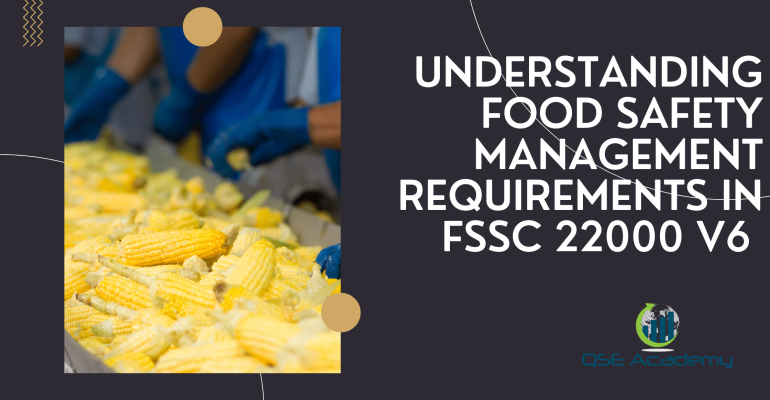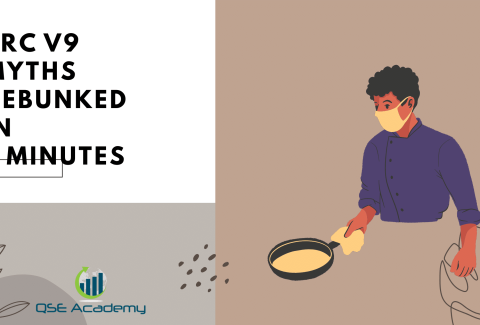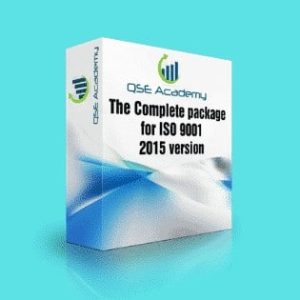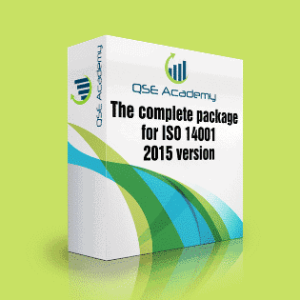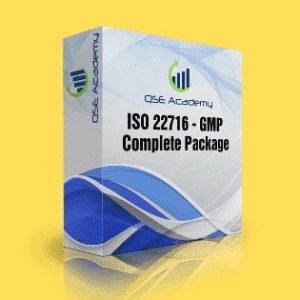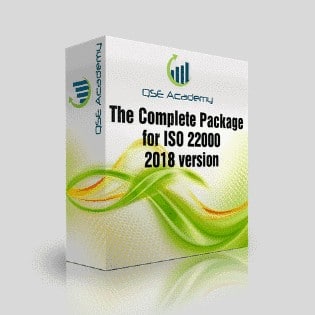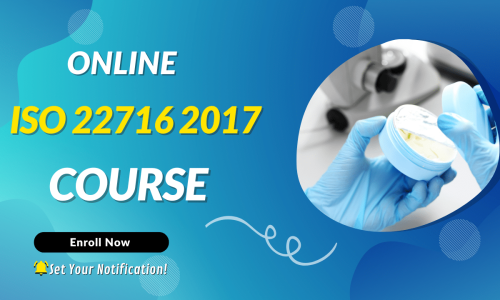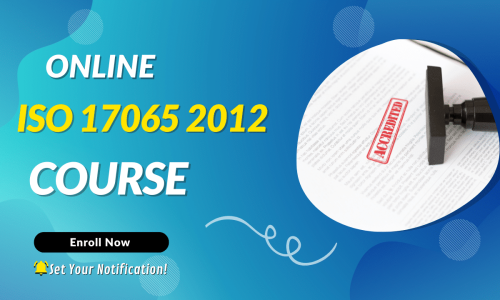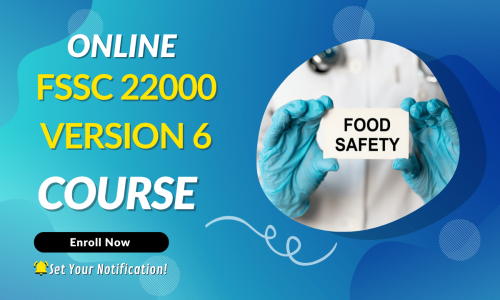Understanding Food Safety Management Requirements in FSSC 22000 V6
Last Updated on October 13, 2025 by Hafsa J.
Understanding Food Safety Management Requirements in FSSC 22000 V6
Let’s be honest—trying to wrap your head around all the food safety standards out there can feel like juggling knives while blindfolded. And just when you think you’ve got FSSC 22000 figured out, here comes Version 6 with new twists, more detailed requirements, and a sharper focus on risks, quality, and sustainability.
Now, I’ve spent over 10 years working with food manufacturers, processors, and suppliers, helping them implement FSSC 22000 from the ground up. And trust me, I’ve seen it all—from spotless factories still failing audits to small teams nailing compliance because they focused on the right things.
So if you’re here because you’re trying to understand what Version 6 really requires, and more importantly, how to actually meet those requirements, you’re in the right place.
In this guide, I’ll walk you through the essentials of food safety management under FSSC 22000 V6—without the jargon overload. You’ll get clear breakdowns, practical insights, and real-world advice to help you not just tick boxes, but build a food safety system that actually works.
Sound good? Let’s dive in.
What’s New in FSSC 22000 Version 6? (And Why You Should Care)
Here’s what I’ve noticed—most teams think, “We’re already certified under Version 5.1, how different can Version 6 really be?” Well… it’s different enough that if you ignore the changes, you could be looking at some serious nonconformities during your next audit.
So, what actually changed?
FSSC 22000 Version 6 isn’t just a minor update—it’s a strategic shift. Here are the big changes you need to know about:
-
More focus on food safety culture.
This isn’t just about policies on paper anymore. Now, auditors want to see how food safety values are communicated, practiced, and reinforced across all levels of your organization. -
New quality control requirements.
Yep, FSSC 22000 V6 brings quality and safety closer together. You’ll need to show that you’re monitoring not just safety hazards, but product quality risks too. -
Environmental monitoring is now mandatory (for some).
If you’re in food manufacturing, get ready to implement and document a solid environmental monitoring program. -
Communication with authorities.
This is a new requirement. Your FSMS now needs to define how and when you’ll notify regulatory bodies if something goes wrong. -
Updated food chain categories.
The scope of who needs to comply has widened, so double-check that your category still fits under the new definitions.
Real-World Example:
I recently worked with a medium-sized beverage company that assumed they could just tweak a few documents and be good to go. But once we did a full gap assessment, we found eight areas that needed major updates—including missing proof of food safety culture initiatives and unclear authority communication plans. That’s not something you want to discover mid-audit.
Understanding ISO 22000 Core Requirements (The Foundation of FSSC 22000)
Here’s the deal—FSSC 22000 is built on ISO 22000, which means if you don’t understand ISO 22000’s core requirements, you’ll struggle to meet FSSC’s expectations.
I’ve had clients come to me saying, “We thought FSSC 22000 was just a fancier version of ISO 22000.” And while that’s kinda true, the key word here is “foundation.” ISO 22000 lays the groundwork for your entire food safety management system (FSMS), and FSSC just builds on top of it.
So what are the ISO 22000 basics you must get right?
Let’s break down the essentials:
1. The Process Approach + PDCA Cycle
-
Think of your FSMS as a living, breathing system. Every process should follow the Plan-Do-Check-Act cycle.
-
You’re not just reacting to problems—you’re proactively planning, executing, monitoring, and improving.
2. Risk-Based Thinking
-
ISO 22000 requires you to assess both operational risks (like hazards in production) and strategic risks (like supply chain disruptions).
-
Many teams focus only on CCPs—don’t forget the business-level risks too.
3. Leadership & Commitment
-
Your top management isn’t just there to sign off on policies. They need to be actively involved in promoting food safety culture and ensuring resources are in place.
4. Performance Evaluation
-
You need to monitor your FSMS using KPIs, internal audits, and regular management reviews.
-
Don’t skip this—it’s one of the first things auditors ask to see.
5. Improvement
-
Continuous improvement isn’t just a buzzword. ISO 22000 wants proof that you’re learning from issues, not just fixing them and moving on.
Real-World Insight:
One bakery I worked with nailed their HACCP and PRPs—but completely overlooked risk-based thinking at the business level. When an ingredient shortage hit, they had no plan, which caused a huge production delay. That’s why ISO 22000’s broader risk lens matters—it’s not just about food safety, it’s about operational resilience too.
PRPs and Technical Specifications: The Real Backbone of Your FSMS
Alright, let’s talk about something I see many teams gloss over—Prerequisite Programs (PRPs). And let me say this clearly: If your PRPs are weak, your food safety system will crack—no matter how solid your HACCP or documentation looks on paper.
What exactly are PRPs?
PRPs are the basic conditions and activities needed to maintain a hygienic environment throughout the food chain. Think of them as your baseline safeguards—cleaning, pest control, water quality, personnel hygiene, and so on.
But under FSSC 22000, it’s not enough to just “have” PRPs. You need to implement technical specifications—like ISO/TS 22002-1 for food manufacturing—that define how these programs must be structured, documented, and validated.
Matching PRPs to Your Food Chain Category
Here’s something I always stress with clients: your PRPs must align with your food chain category.
For example:
-
Food manufacturing? Use ISO/TS 22002-1.
-
Food packaging? Go with ISO/TS 22002-4.
-
Transport and storage? You’ll likely be working with NEN/NTA 8059.
Not using the correct technical spec? That’s a red flag in an audit.
Real-World Example:
I worked with a snack food company that had a spotless production floor—but they used a generic PRP checklist from a previous system. When we compared it to ISO/TS 22002-1, we found they were missing critical elements like air handling controls and proper chemical storage protocols. We fixed it—but it could’ve easily cost them their certification.
Common PRP Gaps to Watch Out For:
-
No documented cleaning validation.
-
Pest control procedures that haven’t been updated in years.
-
Staff hygiene practices not being verified or audited.
-
Incomplete maintenance logs (this one shows up a lot).
Additional FSSC 22000 V6 Requirements: What’s Beyond ISO 22000?
Here’s the thing—FSSC 22000 isn’t just ISO 22000 with a different label. One of the biggest mistakes I see is when companies stop at ISO 22000 compliance and think they’re done. But to be fully certified under FSSC 22000 V6, you need to meet a set of additional requirements that go way beyond the basics.
Let’s break them down.
1. Food Fraud Prevention
You’ll need to conduct a vulnerability assessment for each raw material or supplier and put mitigation strategies in place.
Example: I once worked with a confectionery business that sourced honey from multiple countries. We built a scoring system to flag suppliers with inconsistent pricing or traceability issues. That one move helped them avoid a major recall later.
2. Food Defense
This isn’t just about locks on the doors. You need a site-specific threat assessment and a plan to protect against intentional contamination.
Quick Tip: Don’t overcomplicate this. Walk through your facility with a “What if someone wanted to sabotage this?” mindset. Then build your plan from those answers.
3. Allergen Management
More detailed now under V6. You need to show how allergens are controlled, segregated, cleaned, and labeled.
I’ve seen auditors dig deep into cleaning validation records, especially in shared equipment lines. Don’t rely on “visually clean” as your proof.
4. Environmental Monitoring (EM)
If you’re in food manufacturing, this is now mandatory. You need to:
-
Identify pathogens of concern.
-
Map sampling points (especially in high-care areas).
-
Track trends—not just individual results.
I had a dairy client who thought swabbing once a quarter was enough. It wasn’t. We implemented a rotating monthly schedule, and their EM data helped catch a potential Listeria issue before it reached distribution.
5. Equipment Management
Expect auditors to ask how your equipment design prevents contamination, allows easy cleaning, and is included in your maintenance schedule.
6. Communication with Authorities
This is new—and often overlooked. You now need a documented plan for how you’ll notify food safety authorities during emergencies (think recalls, contamination events, etc.).
Integrating FSSC 22000 with Other Management Systems (Like ISO 9001 or ISO 14001)
Here’s something I often hear from quality or operations managers:
“We’re already certified to ISO 9001. Do we really need to build a separate system for FSSC 22000?”
Short answer? No.
Long answer? You shouldn’t.
If you’re smart about it, you can (and should) integrate them—and it’ll save your team time, effort, and stress.
Why Integration Makes Sense
All modern ISO-based systems, including FSSC 22000, ISO 9001 (quality), and ISO 14001 (environment), follow the Annex SL structure. That means:
-
They share common clauses (context, leadership, risk, performance, etc.).
-
You can create one management system that covers all of them, with tailored procedures where needed.
What Integration Looks Like in Practice
-
One document control system that covers quality, food safety, and environment.
-
Unified risk assessments that address safety, quality, and environmental hazards.
-
Joint internal audits where each audit covers multiple standards at once.
-
A single management review that tracks performance across the board.
Real-World Example
I worked with a mid-size food packaging plant certified to ISO 9001 and planning to add FSSC 22000. Instead of reinventing the wheel, we built off their existing system:
-
We adapted their supplier approval process to meet food safety requirements.
-
We expanded their quality risk assessment to include contamination risks.
-
Their internal audit program was updated to address both standards in one pass.
They didn’t just pass—they built a system that saved them hours each month.
What to Watch Out For
-
Don’t dilute food safety requirements in the name of simplification.
-
Be crystal clear about roles—who owns what across the different standards.
-
Keep your team trained on the specific requirements of each framework, even if it’s integrated.
Pro Tips and Insider Insights from the Field
Over the years, working with food manufacturers, processors, and suppliers around the world, I’ve picked up a few strategies that make a real difference when it comes to FSSC 22000 success. These aren’t things you’ll always find in the standard—but they’re the kind of insights auditors appreciate and real teams benefit from.
Pro Tip #1: Map Your Requirements Visually
Create a one-page matrix that maps ISO 22000 clauses, PRPs, and FSSC’s additional requirements side by side.
It makes internal audits smoother, keeps teams aligned, and helps you see where overlaps exist.
In one implementation project, this visual tool became the go-to training aid for everyone from operators to managers. It cut onboarding time in half.
Pro Tip #2: Use Cross-Functional Internal Auditors
Train people from different departments to audit parts of the FSMS outside their usual scope.
Why? They bring fresh eyes and are less likely to gloss over issues others might miss.
A maintenance technician once spotted a potential allergen cross-contact issue during a sanitation audit—simply because he wasn’t conditioned to see it the way QA was.
Pro Tip #3: Don’t Just “Train”—Engage
Formal training isn’t enough. Build food safety culture through toolbox talks, huddle discussions, and real-life “what if” scenarios.
One site ran short, five-minute “what would you do?” roleplays during lunch breaks. Audit findings dropped by half that year.
Pro Tip #4: Validate Your PRPs Like You Validate CCPs
Too often, teams treat PRPs as “set and forget.” But poor implementation here causes major audit issues. Validate them, document frequency, and monitor their effectiveness.
For example, prove your cleaning works—not just by scheduling it, but by swabbing surfaces afterward and tracking results over time.
Pro Tip #5: Audit Your Audit Process
Most internal audits cover operations—but rarely evaluate how effective the audit process itself is.
Review whether audit findings are being acted on, if timelines are met, and if repeat issues keep popping up.
Common Mistakes to Avoid and FAQs About FSSC 22000 V6
Let’s face it—even experienced teams can miss the mark when adapting to FSSC 22000 Version 6. And during audits, it’s often the simple stuff that trips people up. Here’s what I see most often—and how you can stay one step ahead.
Common Mistakes That Can Cost You in an Audit
1. Treating ISO 22000 as “good enough”
If you ignore the additional FSSC requirements—like food fraud or environmental monitoring—you’re setting yourself up for nonconformities.
2. Using outdated or generic PRPs
Your PRPs need to match the correct food chain category and follow the right technical spec (like ISO/TS 22002-1 for food manufacturing).
3. Incomplete or unclear risk assessments
A spreadsheet with colored boxes isn’t enough. Auditors want to see how you reached your conclusions and what actions you took.
4. Lack of documented food safety culture efforts
Culture can’t be faked. If you haven’t trained your team, involved leadership, or captured improvement efforts, that will show.
5. Poor traceability during mock recall tests
You should be able to trace ingredients, packaging, and products—forward and backward—within a few hours. If your team struggles with this in a simulation, fix it before the real thing.
Frequently Asked Questions (FAQs)
Q1: Can we just update our old system for V6 or do we need to rebuild from scratch?
You don’t need to start over—but you do need to do a proper gap analysis. Identify what’s missing, update your documentation, and train your staff on what’s new.
Q2: How do we prove we have a “food safety culture”?
There’s no single checklist. Instead, show ongoing training records, leadership involvement, employee feedback, and how food safety is embedded in daily routines.
Q3: Is FSSC 22000 mandatory or voluntary?
It’s voluntary—but if you supply to major retailers, food processors, or international markets, it’s often a contractual requirement. In some cases, it’s the difference between landing or losing a big deal.
Pro Tip:
Audit readiness isn’t about scrambling the week before. Build systems that work day-to-day. That way, when audit time comes, you’re already doing what’s required—and proving it is just a matter of showing your work.
What You Need to Remember
So here’s the bottom line—FSSC 22000 Version 6 isn’t just an update. It’s a shift in how food safety is managed, documented, and audited. From food fraud and defense to culture, environmental monitoring, and quality integration, the standard now expects more—and in return, helps organizations build safer, stronger, and more resilient systems.
We’ve covered the core requirements, the additional FSSC components, audit expectations, integration tips, and the most common pitfalls I’ve seen firsthand. Hopefully, you’re now clearer not just on what the standard requires—but how to actually meet those requirements in a way that’s practical, efficient, and audit-ready.
In my experience helping hundreds of food businesses implement and maintain FSSC 22000 systems, the ones who succeed long-term are those who build food safety into the culture, not just the compliance checklist.
What You Should Do Next
If you’re serious about getting your system aligned with FSSC 22000 V6—or making your upcoming audit smoother—now’s the time to act:
-
Need help getting started or assessing your current system?
Book a one-on-one consultation with our expert team. -
Want a head start on implementation?
Download our free FSSC 22000 V6 gap analysis checklist—designed to help you spot weaknesses before your auditor does. -
Looking for hands-on support?
We offer customized implementation packages tailored to your business size and food chain category.
You’re not in this alone. Whether you’re building your FSMS from scratch or just updating for Version 6, we’ve got the tools, experience, and insight to help you get it done—without the stress.
Let’s make food safety simple, practical, and effective. Ready when you are.
Whether it’s ISO 9001, ISO 22000, or the cosmetics-focused ISO 22716, I’ve spent my career I’m not here to call myself an expert—I prefer “enthusiast” because I truly love what I do. When I’m not writing about standards, you’ll probably find me playing Piano 🎹, connecting with people, or diving into my next big project💫. I’m an engineer specialized in the food and agricultural industry
make ISO standards less intimidating and more approachable for everyone.
turning complex jargon into clear, actionable steps that businesses can actually use.
There’s something incredibly rewarding about helping people navigate food safety and quality management systems
in a way that feels simple, practical, and even enjoyable.
I have a Master’s in QHSE management and over 12 years of experience as a Quality Manager
I’ve helped more than 15 companies implement ISO 9001, ISO 22000, ISO 22716, GMP, and other standards
My clients include food producers, cosmetics manufacturers, laboratories, and service companies
I believe quality systems should be simple, useful, and efficient.

